Timmons Talks Immigration in Minnesota
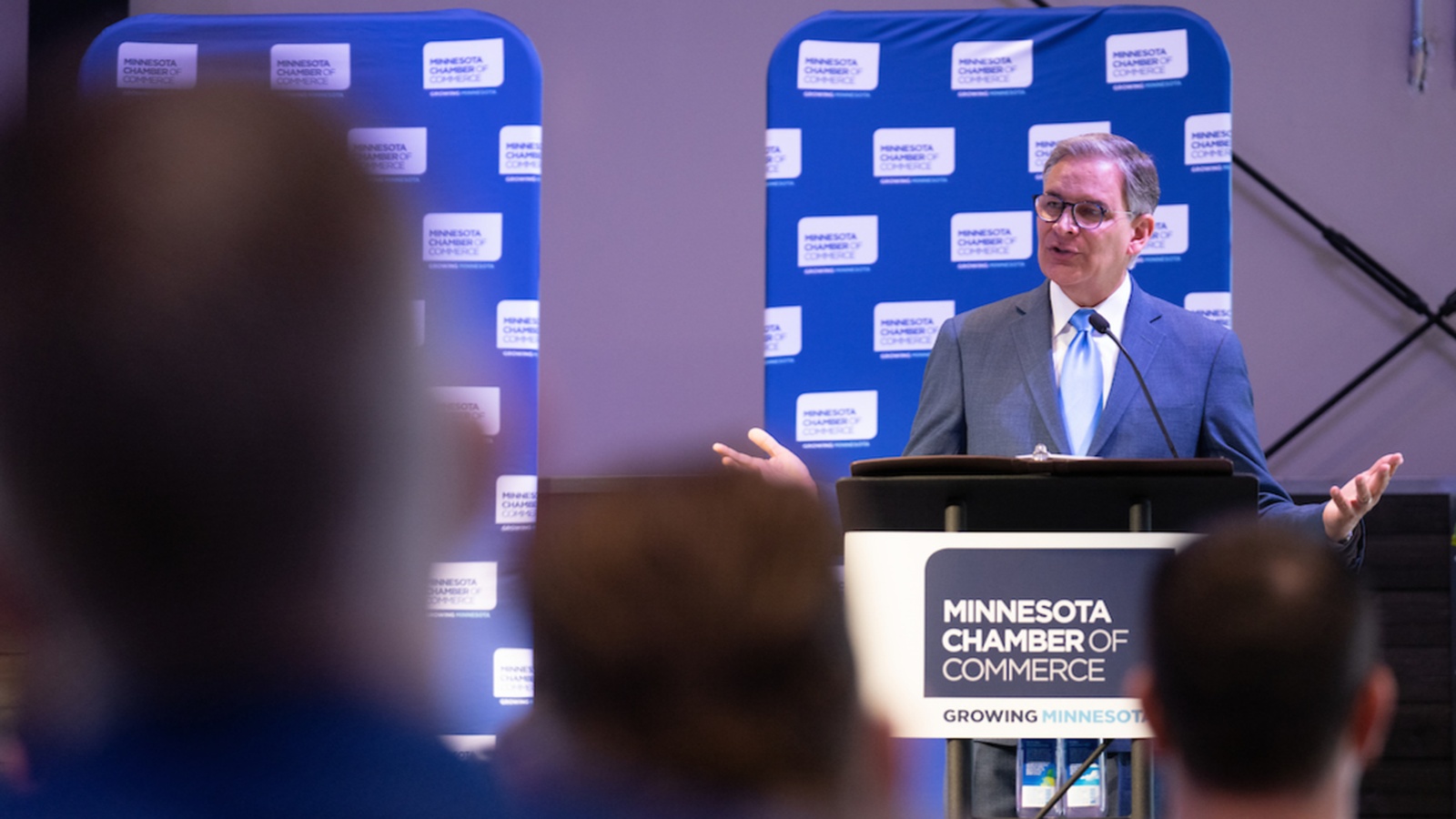
Manufacturing in the U.S. is advancing, but to grow it needs more workers—including via immigration. That’s why immigration reform is one of the NAM’s key policy priorities to boost the industry’s competitiveness, as NAM President and CEO Jay Timmons told the Minnesota Manufacturers’ Summit yesterday in Minneapolis. The event was hosted by the Minnesota Chamber of Commerce.
- This week, the NAM released an updated version of its immigration policy blueprint “A Way Forward,” which Timmons highlighted in his speech.
What our immigration system needs: “Despite all the overheated rhetoric, one thing we can agree on is this: the United States has a broken and unreliable immigration system—and it is harming manufacturers’ competitiveness,” said Timmons.
- He cited the need for more employment-based H-1B visas; more temporary H-2B visas; more programs for foreign-born U.S. students in STEM fields; a new visa category to address temporary economic needs in the U.S.; and protection for Dreamers along with a pathway to legal status for unauthorized U.S. residents.
Other priorities: Timmons also covered other key manufacturing priorities, including energy policy fixes.
- “Congress can deliver sustainable permitting improvements that can fast-track critical infrastructure projects and speed up the construction of new manufacturing facilities,” he said.
- “The situation in Europe and the actions of OPEC show us this isn’t just an issue of economic competitiveness. It’s also an issue of national security.”
Reducing the burden: “Policymakers can also help by streamlining regulatory policy in general,” Timmons added. “The annual regulatory cost burden for an average U.S. firm represents 21% of its payroll.”
- “Manufacturers support smart, sensible regulation to protect our health, our workplaces and the environment. But the more time and resources manufacturers spend on their compliance burden every year, the less we can spend solving our greatest challenges.”
The bottom line: “Whether it’s permitting reform or immigration reform, building on tax reform or advancing workforce solutions, manufacturers are positioned to lead,” said Timmons. “So, our role is to be true to the values that have made America exceptional and kept manufacturing strong: free enterprise, competitiveness, individual liberty and equal opportunity.”
Further reading: Timmons has been hitting the road this week to promote manufacturers’ priorities to leaders across the country. If you missed it, catch up on his earlier speech in Phoenix, Arizona.
Manufacturers Renew Call for Action on Immigration
NAM CEO says broken system is harming manufacturers’ competitiveness
Washington, D.C. – National Association of Manufacturers President and CEO Jay Timmons addressed the Minnesota Chamber of Commerce’s Manufacturers’ Summit today, where he made another call for policymakers to act on immigration, saying it is time to “fix this problem now.” Timmons called on Congress to act in the year-end government funding bill. His remarks come as the NAM rereleased its immigration proposal “A Way Forward.”
Excerpts from Timmons’ speech:
“First and foremost, this is a humanitarian issue. We see it play out in tragic ways—including family separations at the border and confusion as families seek to reunite following a harrowing journey.”
“But as manufacturing and business leaders, we also know there are serious economic consequences. Research and development—the cornerstone of innovation and our industry’s success—depends on access to the best and brightest from across the world.”
“The broken immigration status quo is also preventing us from growing our talent pool, leaving jobs unfilled. There are around six job seekers for every 10 job openings in the U.S., and our population growth is slowing. Last year, the U.S. population grew at its slowest rate ever.”
“Last year’s infrastructure law and this year’s CHIPS and Science Act prove that Congress can still get bipartisan things done—and immigration should be next on the list, whether it’s one bill or multiple bills. We would absolutely support a long-term, comprehensive legislative fix that addresses all of these issues, but we also want to be realists. We have a workforce crisis that needs to be addressed now, so let’s take action where we can. We want to focus on the art of the possible. One approach would be to address some of these issues in the year-end government funding bill.”
First released in 2019 and updated to reflect current challenges, the NAM’s “A Way Forward” proposal identifies seven core areas of action for Congress and the administration to take:
- Strengthen border security through physical infrastructure and best-in-class technology.
- Prioritize America’s workforce needs through reforms to the legal immigration system.
- Reform nonimmigrant visas and temporary worker programs to reflect employer needs, including a fund to support STEM programs so that we can reduce the need for these types of visas in the future.
- Provide a permanent and compassionate solution for populations facing uncertainty, including the Dreamers, who were brought here as children and know no other home.
- Reform asylum and refugee programs for a more orderly and humane system, including asylum standards consistent with our values.
- Fix the problem of the unauthorized population with a firm reset, requiring an orderly process of review, including financial penalties for those who seek to become legal and deportation for those who choose to stay in the shadows.
- Strengthen the rule of law so that it is respected and followed by all, with a focus on gang violence and also on requiring localities to cooperate to advance the enforcement of immigration priorities.
View “A Way Forward” in full here.
-NAM-
The National Association of Manufacturers is the largest manufacturing association in the United States, representing small and large manufacturers in every industrial sector and in all 50 states. Manufacturing employs more than 12.8 million men and women, contributes $2.77 trillion to the U.S. economy annually and accounts for 58% of private-sector research and development. The NAM is the powerful voice of the manufacturing community and the leading advocate for a policy agenda that helps manufacturers compete in the global economy and create jobs across the United States. For more information about the NAM or to follow us on Twitter and Facebook, please visit www.nam.org
Timmons Lays Out Manufacturing Priorities
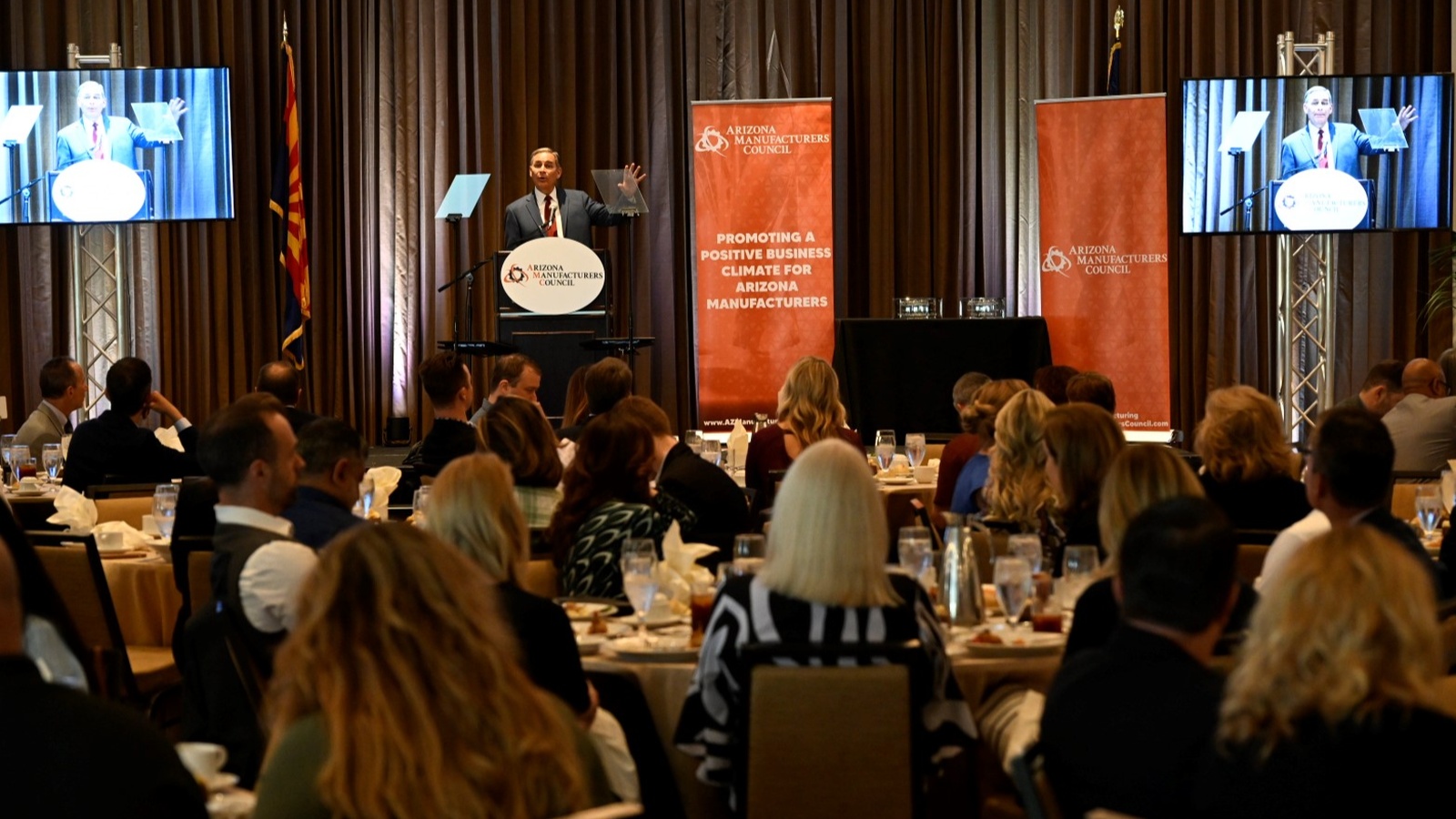
NAM President and CEO Jay Timmons is on a barnstorming tour of the U.S., to raise more support among leaders for addressing supply chain challenges, creating more manufacturing jobs and making the country more resilient. He brought this message to the 2022 Arizona Manufacturing Summit in Phoenix, Arizona, yesterday.
Manufacturing’s strength: “I’m pleased to report that manufacturers are shattering expectations across the United States,” said Timmons. “Here’s one encouraging fact: manufacturers have now recovered all the jobs the industry lost at the start of the pandemic—and then some. There are more than 12.8 million people working in manufacturing… And that’s because we’re doing what we’ve always done. We’re solving problems, we’re innovating and leading into the future.”
Challenges ahead: “Inflation has reached the highest level in decades,” said Timmons. “Supply chains are still strained, making it harder to move resources and products. Global instability—especially Russia’s war on Ukraine—shows us it’s more important than ever that we secure domestic energy supplies.”
- “We’re facing a workforce crisis, with less than six job seekers for every ten jobs in America. And almost 70% of Americans today say the country is on the wrong track. Now, we’ve seen some moments of historic bipartisan action in Washington … But there is so much more to be done.”
Competing to Win: Timmons pointed to the NAM’s policy roadmap, “Competing to Win,” which offers an agenda for manufacturing competitiveness on issues including the following:
- Taxes: “We need U.S. tax policy to keep up and encourage more industrial investment here,” said Timmons. “So, we’re calling for making the 20% deduction for pass-through income permanent—and expanding it. The small and medium-sized businesses here deserve confidence that they won’t lose that all-important tool. And we need to fix provisions of the tax law that are making R&D and capital investment more expensive starting this tax year.”
- Trade: “While we’re working on tax policy here at home, we also need to expand opportunities to sell our products overseas,” said Timmons. “Exports are part of our industry’s lifeblood. That means policymakers should hold countries accountable for practices that harm manufacturers in the U.S. We should continue pursuing cutting-edge trade deals, while ensuring that the agreements already in place are delivering for our industry. And we should reject policies at international bodies like the World Trade Organization that would take away intellectual property rights.”
- Immigration: “We need Congress to fix the broken, unreliable immigration system,” said Timmons. “Clearly, we need border security, and we need more avenues for people to come legally and work. It’s critical to our economic competitiveness—and consistent with our values.”
The way forward: “It can be disheartening to know that so many Americans don’t believe the country is on the right track,” said Timmons. “But a focus on policy—getting things done, rather than blaming each other—can change that. And manufacturers are positioned to lead. The work we do to create jobs and to improve the quality of life is essential, and we can’t let up. We won’t let up.”
Manufacturers Call for Repeal of Anti-Competitive R&D Tax Policy
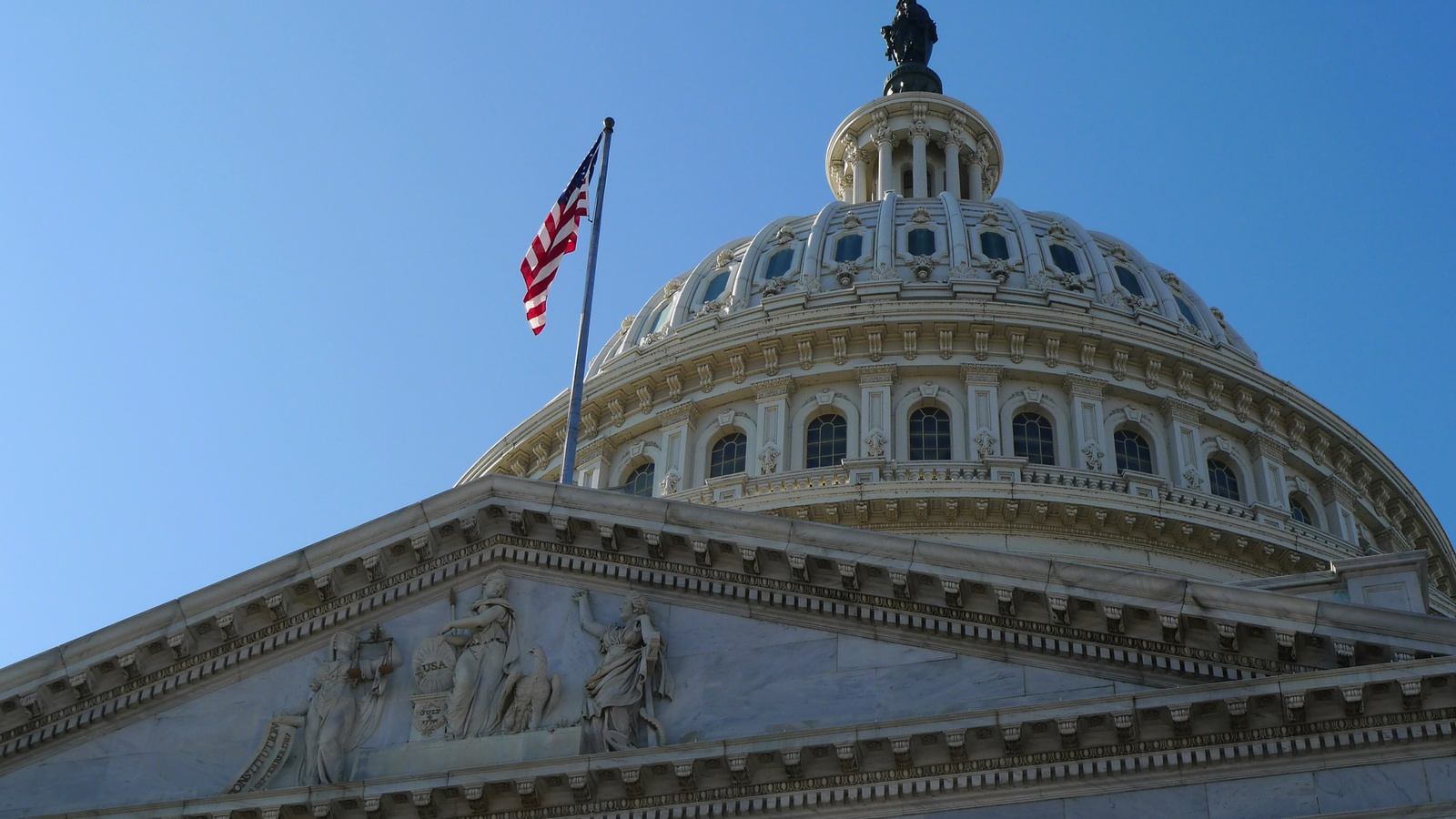
This story can also be found within the NAM’s R&D action center.
In an industry where technology and processes can change quickly, manufacturers in the United States must be able to invest, grow and maintain their edge against foreign competitors. At a time when China is providing extensive support for its manufacturing industry, the NAM is pushing to ensure that the men and women who make things in America have the tools they need to succeed.
The challenge: Right now, China’s tax policies offer significant incentives for research and development. For example, China offers a super deduction for manufacturers performing R&D by allowing them to deduct 200% of their R&D expenses. This policy makes it more attractive for manufacturers in China to invest in innovation—and to out-compete manufacturers in the United States.
The comparison: Meanwhile, U.S. manufacturers, who drive more innovation than any other sector, face a harmful tax change that if not reversed will hurt jobs, innovation and competitiveness.
- Up until January 2022, a business in the United States could deduct 100% of their R&D expenses in the year during which those expenses occurred.
- But a change in the tax code that took effect this year now requires businesses to spread those deductions over a period of years—the so-called amortization requirement—making investment in innovation more expensive to conduct.
Recent action: This week, the NAM rallied the business community to urge Congress to repeal the recent tax change, so that businesses can continue to innovate, bolster the economy and create well-paying jobs.
- “Failing to reverse this change will cost well-paying jobs and reduce future innovation-directed R&D,” according to the NAM’s letter, which was signed by more than 400 companies and business organizations.
- “Requiring the amortization of research expenses will reduce R&D spending and lead to a loss of more than 20,000 R&D jobs in the first five years with the number of lost jobs rising to nearly 60,000 over the following five years. Moreover, when accounting for the spillover effect from R&D spending, nearly three times as many jobs will be affected.”
- “At a time of increasingly fierce global competition for research dollars, this change will make it harder for the next R&D dollar to be spent in the U.S. which will ultimately hurt future U.S. competitiveness.”
What we’re saying: “Research and development is the lifeblood of manufacturing,” said NAM Senior Director of Tax Policy David Eiselsberg. “It is what drives innovation, competitiveness, economic growth and the creation of high-paying jobs. But that is all at risk unless Congress quickly acts to repeal the harmful change in the tax treatment of R&D expenses.”
Finer point: “If Congress and the administration do nothing, small manufacturers will face a huge tax increase at the end of the year,” NAM Executive Vice President Erin Streeter warned. “This will have a crippling effect—and we’re mobilizing support at the NAM across the industry to get another hard-fought priority done.”
How Policymakers Can Support the Manufacturing Workforce
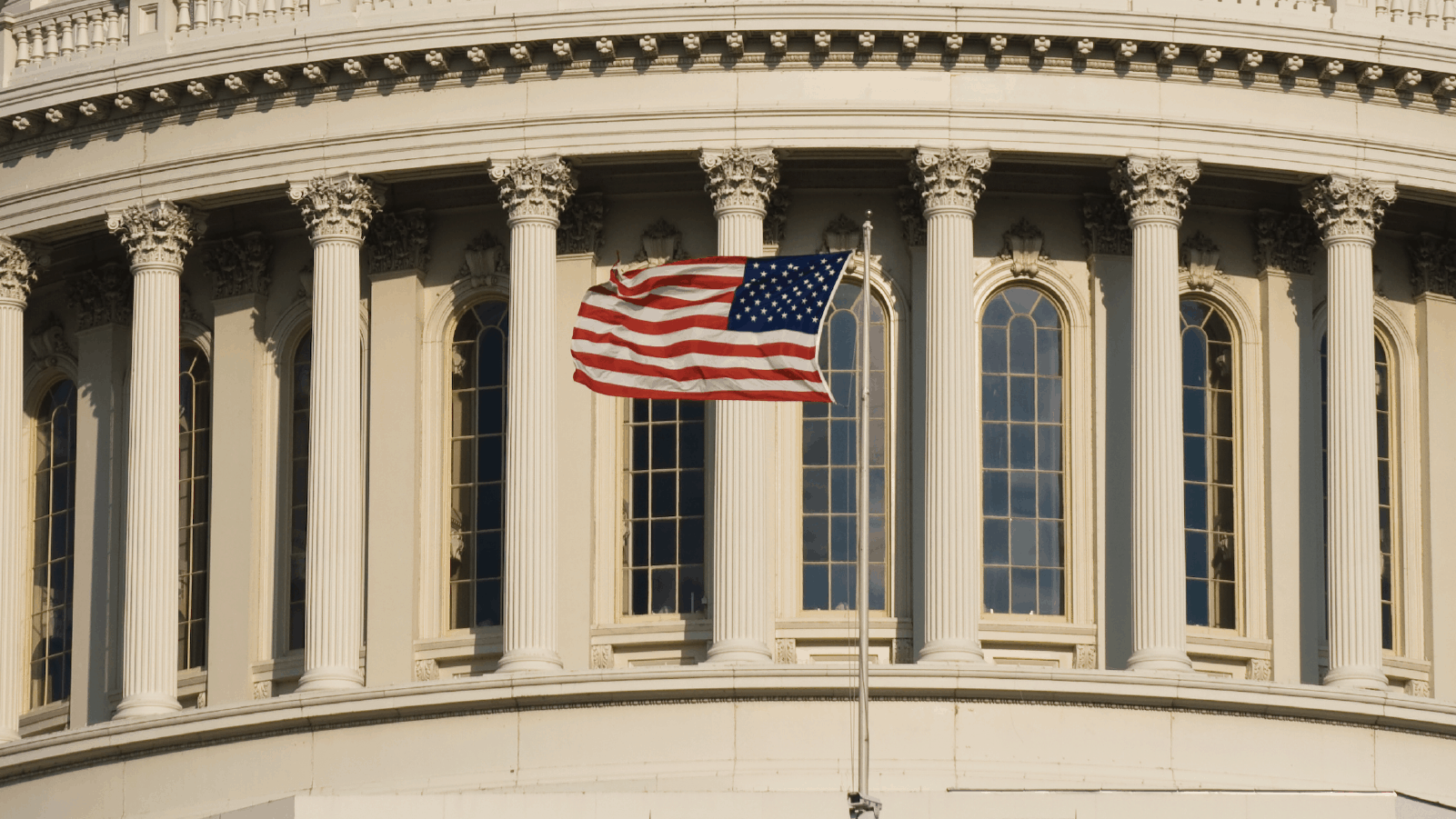
Manufacturers across the country need a strong workforce to enhance the industry’s competitiveness and lead it into a bright future. The NAM is working with policymakers and manufacturers alike to help make that future possible.
The challenge: The need for qualified candidates in manufacturing roles is growing fast. Since the beginning of the COVID-19 pandemic, the number of available manufacturing jobs has nearly doubled.
- According to a recent study by The Manufacturing Institute—the workforce development and education partner of the NAM—and Deloitte, retirements and a persistent skills gap could cause more than 2.1 million U.S. manufacturing jobs to go unfilled by 2030.
Our priorities: The NAM is advocating policies that will help people of all backgrounds find incredible jobs in modern manufacturing.
- That means ensuring every student graduates from high school with the preparation they need to take the next step; reducing barriers to postsecondary education and skills development; creating pathways to good jobs and lifelong learning; creating partnerships between post-secondary institutions and employers; and supporting a range of high-quality education and training models.
Our solutions: To achieve these objectives, the NAM has offered a series of commonsense solutions, including the following:
- Expanding the Pell Grant program to include short-term education models and skills training
- Investing in apprenticeship and earn-and-learn programs
- Promoting attainment of industry-based credentials as a way to complete community and technical colleges
- Increasing the amount of tax-exempt educational assistance employers can provide
- Prioritizing employer leadership in federal discretionary grant competitions
- Reforming federal work study programs to highlight career-focused skills
What we’re saying: “Manufacturers are training and educating new generations of talented, ambitious young people,” said NAM Executive Vice President Erin Streeter in her keynote address at the 2022 Manufacturers’ Awards Banquet for the Southwest Virginia Alliance for Manufacturing. “All of this is ultimately about imparting learners with the skills and values needed to succeed in modern manufacturing.”
Our programs: The MI is focused on a range of initiatives to help build the manufacturing workforce. People interested in a manufacturing career should consider the FAME program, originally founded by Toyota, which offers participants training and certification. The MI also offers programs focused specifically on students, veterans and women.
Learn more: Find out more about the NAM’s policy recommendations for building a strong and effective workforce in “Competing to Win”—a blueprint for policies that support manufacturing in America.
Wabash Castings to Host Sen. Todd Young
Leaders to Discuss Manufacturing Competitiveness and Policies Needed to Help the Industry
Washington, D.C. – On Tuesday, Oct. 4, Senator Todd Young (R-IN) is scheduled to visit NAM member company Wabash Castings. Sen. Young will be joined by Wabash Castings CEO and newly elected NAM board member Sachin Shivaram as well as other company leaders and manufacturing workers to discuss policies impacting the manufacturing industry as laid out in the NAM’s “Competing to Win” plan.
Sen. Young has been a champion of key provisions of the NAM’s competitiveness agenda in his support of the CHIPS and Science Act and the Infrastructure Investment and Jobs Act.
Interested media are invited to cover the walking tour of the facility and participate in media availability following the event, time and schedule permitting.
| WHO: | Sen. Todd Young (R-IN) Sachin Shivaram, CEO, Wabash Castings, NAM Board Member |
| WHERE: | Wabash Castings, Wabash, Indiana |
| WHEN: | Tuesday, Oct. 4, 1:00 p.m. – 2:00 p.m. EDT |
| RSVP: | Email [email protected] to RSVP |
Background: The NAM’s policy priorities are outlined in the latest version of “Competing to Win,” a comprehensive blueprint to bolster manufacturers’ competitiveness. The plan includes solutions to urgent problems, such as energy security, immigration reform, supply chain disruptions, the ongoing workforce shortage and more.
-NAM-
The National Association of Manufacturers is the largest manufacturing association in the United States, representing small and large manufacturers in every industrial sector and in all 50 states. Manufacturing employs more than 12.8 million men and women, contributes $2.77 trillion to the U.S. economy annually and accounts for 58% of private-sector research and development. The NAM is the powerful voice of the manufacturing community and the leading advocate for a policy agenda that helps manufacturers compete in the global economy and create jobs across the United States. For more information about the NAM or to follow us on Twitter and Facebook, please visit www.nam.org.
Action Needed on Interest Deductibility, NAM Study Shows
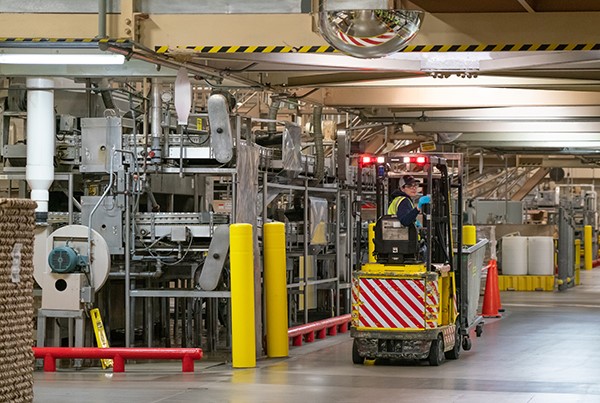
An important new study released by the NAM shows that failure to reverse a new, stricter limit on interest deductibility could cost the United States nearly half a million jobs.
The background: Manufacturing is a capital-intensive industry—and manufacturers often borrow funds to purchase capital equipment and invest in growth. The interest they pay on those loans is tax deductible up to a certain limit. However, a recent change in tax law modified the way that limit is calculated—leaving companies with a smaller deduction and increased costs as they seek to invest in equipment and job creation.
The data: The study published by the NAM paints a bleak picture of the economic impact if Congress fails to take action to fix this problem. According to the EY analysis, keeping a stricter interest deduction in place would increase manufacturers’ cost of capital and lead to reduced investments in the U.S. economy. The result would be lost jobs, reduced employee compensation and lessened U.S. GDP. Specifically, the study finds that the stricter interest limitation will cost the United States:
- 467,000 jobs;
- $23.4 billion of employee compensation; and
- $43.8 billion in GDP.
What’s next: The NAM supports the Permanently Preserving America’s Investment in Manufacturing Act (H.R. 5371/S. 1077), bipartisan legislation that would reverse the stricter limitation and ensure that manufacturers can make critical investments in themselves and their communities.
What we’re saying: “These numbers show the importance of preserving manufacturers’ ability to deduct interest and finance critical job-creating investments,” said NAM Senior Director of Tax and Domestic Economic Policy Charles Crain. “With 467,000 jobs at risk, the NAM is leading the effort to secure a reversal of this harmful change by year’s end.”
Building Infrastructure That Works

As supply chain disruptions and industrial shipping challenges of the past few years have proven, the U.S. infrastructure network is in dire need of a comprehensive overhaul. That’s why it’s a key focus of the NAM’s “Competing to Win” policy roadmap.
Turnkey fixes: “Competing to Win,” which focuses on immediately implementable solutions for congressional leaders in 12 policy arenas, enumerates a wide range of policies that will bolster manufacturers’ competitiveness.
Historic and bipartisan: With its $1.2 trillion investment, last year’s Infrastructure Investment and Jobs Act provided a solid foundation for upgrading roads, airports, bridges, ports, railroads and more.
- In fact, much of the final legislative text of the IIJA resembled proposals included in “Building to Win,” the NAM’s blueprint for modernizing our transportation, energy, water and digital infrastructure.
- The legislation contains nearly $550 billion in new federal appropriations for projects ranging from bridge and highway updates to significant broadband expansion and community climate resilience efforts.
The NAM’s plan: The NAM’s latest policy prescriptions are commonsense ideas that will help policymakers make the best use of the IIJA and enhance American competitiveness. Here’s a quick tour of the most important aspects it addresses.
Funding: The first order of business is paying for the upgrades. Policymakers should modernize user fees that support road and runway projects with much-needed funding.
Efficiency: Next up is fixing the all-too-sluggish pace of infrastructure projects. Some of the NAM’s recommendations:
- Keep improving the broken permitting process to decrease time-consuming reviews and eliminate burdensome costs.
- Clear the extensive backlog of essential infrastructure projects that are already in the planning process and awaiting final approval.
- And last, streamline regulatory agencies’ processes so that key transportation projects don’t get tripped up by more red tape.
Flexibility: Public–private partnerships and innovative collaboration between industry and government should play a large role in these upgrades, but not every approach is universal. Policymakers should maintain key funding sources and keep the federal government involved but retain a results-oriented focus to improve our nation’s infrastructure.
The last word: “‘Competing to Win’ builds on the historic gains made through last year’s Infrastructure Investment and Jobs Act and presents policymakers with a roadmap for improving American economic prosperity,” said NAM Vice President of Infrastructure, Innovation and Human Resources Policy Robyn Boerstling.
- “Manufacturers are the backbone of our national industrial base and rely on all parts of the transportation supply chain to create, assemble and ship to market essential products and consumer goods. The steps outlined in this plan are commonsense and will generate the economic growth needed to enhance American companies’ competitiveness in a global marketplace.”
New Study | Stricter Interest Expense Limits Costs Half Million Jobs
Failing to Address EBIT-Based Limitation Harms Manufacturers’ Competitiveness
Washington, D.C. – Following the release of an analysis on the economic impact of failing to reverse a stricter limitation on deductions for interest on business loans that took effect earlier this year, National Association of Manufacturers Managing Vice President of Tax and Domestic Economic Policy Chris Netram released the following statement.
Key Findings:
The stricter EBIT-based 163(j) interest expense limitation before market adjustments would cost:
- 467,000 jobs;
- $23.4 billion of employee compensation; and
- $43.8 billion in GDP.
“Manufacturers are already facing incredible economic headwinds due to increased input costs, rising interest rates, labor shortages and snarled supply chains. This analysis shows that failing to reverse the damaging change to the tax treatment of interest on business loans disproportionately harms manufacturers at a perilous time—costing hundreds of thousands of jobs and billions of dollars in economic growth.
“America is an international outlier in imposing such a strict interest expense limitation. With nearly half a million American jobs at stake, Congress must act by year’s end to reverse the stricter EBIT-based limitation and allow manufacturers to continue to invest for growth.”
EY’s Quantitative Economics and Statistics group prepared the analysis.
Background:
Prior to 2022, the interest expense limitation was calculated based on a company’s earnings before interest, tax, depreciation and amortization (EBITDA). This year, a stricter limitation based on a company’s earnings before interest and tax (EBIT) took effect. By excluding depreciation and amortization from the calculation, the stricter limitation increases the tax burden on manufacturers that make investments in long-lived capital equipment.
-NAM-
The National Association of Manufacturers is the largest manufacturing association in the United States, representing small and large manufacturers in every industrial sector and in all 50 states. Manufacturing employs more than 12.8 million men and women, contributes $2.77 trillion to the U.S. economy annually and accounts for 58% of private-sector research and development. The NAM is the powerful voice of the manufacturing community and the leading advocate for a policy agenda that helps manufacturers compete in the global economy and create jobs across the United States. For more information about the NAM or to follow us on Twitter and Facebook, please visit www.nam.org.
Manufacturers: Kigali Ratification a Blueprint for Bipartisan Climate Action
Washington, D.C. – Following the Senate’s 69–27 vote to ratify the Kigali Amendment to the Montreal Protocol, National Association of Manufacturers Vice President of Energy and Resources Policy Rachel Jones released the following statement:
“The Senate’s vote to ratify the Kigali Amendment is a blueprint for the type of bipartisan climate action that meets science-based targets while strengthening manufacturing competitiveness. It will reduce emissions by the equivalent of 80 billion metric tons of CO2 by 2050, with the potential to create up to 150,000 more U.S. jobs by 2027. This action proves that if we work together—if we rise above politics and partisanship and focus on solving problems—we can make our vision of a brighter tomorrow into reality.
“Manufacturers have supported the ratification of the Kigali Amendment for years. This treaty will be a boon for manufacturing, for global trade and for products that protect health, safety, comfort and productivity worldwide. Ratification further strengthens our global leadership on the phasedown of hydrofluorocarbons and will help the U.S. hold countries like China and India accountable on emissions. This shows that we can tackle climate change while strengthening our global competitiveness as we deploy next-generation technologies.”
-NAM-
The National Association of Manufacturers is the largest manufacturing association in the United States, representing small and large manufacturers in every industrial sector and in all 50 states. Manufacturing employs more than 12.8 million men and women, contributes $2.77 trillion to the U.S. economy annually and accounts for 58% of private-sector research and development. The NAM is the powerful voice of the manufacturing community and the leading advocate for a policy agenda that helps manufacturers compete in the global economy and create jobs across the United States. For more information about the NAM or to follow us on Twitter and Facebook, please visit www.nam.org.
